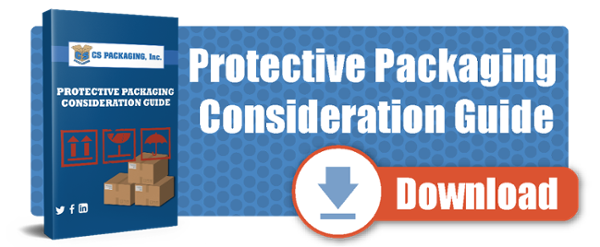.webp?width=290&height=213&name=Untitled%20(1).webp)
To stay competitive and relevant in the constantly evolving global markets, brands need to invest serious capital into their product branding and packaging to ensure their customers are getting the best level of protection with the most eco-friendly materials.
But with sustainability trending in the mainstream, the eco-friendly packaging industry has become a haven for misleading information and deceptive practices.
As such, it’s important to understand the misconceptions about sustainable packaging, and what the truth is. Below, we’ve covered three of the most common misconceptions about sustainability and eco-friendly packaging:
Correcting the Misconceptions of Sustainable Packaging
Misconception #1: Sustainable packaging isn’t economical
It’s important to remember that the most sustainable and cost-effective packaging will always be what gets the item to the destination safely. However, when looking at sustainable packaging as a whole, the costs are generally the same in the long run as they are for other packaging types.
Returns due to damages or busted packaging are not only expensive, but they also incur a larger carbon footprint with added transportation and added packaging to re-ship the item. While some specific eco-friendly items are more expensive when made from sustainable materials, companies can decrease wasted capital and increase profitability by being sustainable!
Misconception #2: Zero Waste Means No Plastics
True sustainability comes from utilizing the least amount of packaging material with a similar level of protection as the other more material-intense options.
At a base level, identifying a material's recyclability is important since some types of packaging materials and fillers are inherently more recyclable than others. However, sustainability isn’t always solely about integrating recycled products.
Sometimes sustainability is about choosing the better, more protective option. For instance, incorporating a thin plastic insert into a fragile package may be more protective, efficient, cost-effective, and eco-friendly than using 10x that amount of packaging paper.
It’s no secret that most consumer packaging is meant to be either recycled or thrown away, industrial or Business to Business (B2B) packaging often includes reusable packaging elements. Because these packages are meant to be reused, integrating more structurally-sound packaging as plastic crates leads to less waste in the B2B shipping industry.
While plastic packaging typically gets a bad reputation, sometimes it’s the most efficient and effective way to package goods.
Misconception #3: Sustainability is just a trend
Today’s market is increasingly focused on sustainability, with some brands even working together to alleviate issues with recycling.
According to Trivium Packaging’s 2021 Global Buying Green Report, 67% of consumers reported being more environmentally aware of their purchases and the impacts the packaging has on the environment. In the face of a global pandemic and major consumer disruptions, sustainability has proven that its no longer a trend, but represents the future of consumerism.
With this push towards eco-friendly packaging options, many major manufacturers are testing packaging that uses more environmentally friendly materials like corrugated or paper.
In a culture where a single comment or show of support can lead to disfavor, brands no longer have the luxury to stay silent on the topic of sustainability. Instead, this must be a key component of the company’s mission and a recognizable component of the brand.
Eco-friendly Packaging: Partner with a Trusted Supplier
Sustainable packaging isn’t just another buzzword - consumers are passionate about protecting the environment and reducing waste. However, with the plethora of packaging types, sizes, and options, brands can easily deploy a deceptive sustainable packaging stratagem. Therefore it's increasingly important to partner with a trusted supplier of sustainable packaging.
Working with an advanced sustainable packaging provider can help bring clarity and guidance on how to expertly package goods and which type of eco-friendly packaging materials to choose.
Still have questions about sustainability or protective packaging? Download our free protective packaging guide below for more information or reach out with any questions.
.png?width=845&height=137&name=Slice%203%20(23).png)
